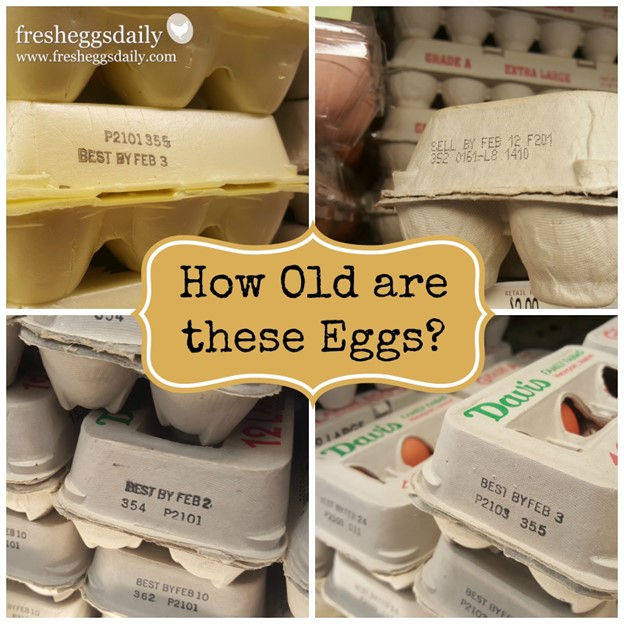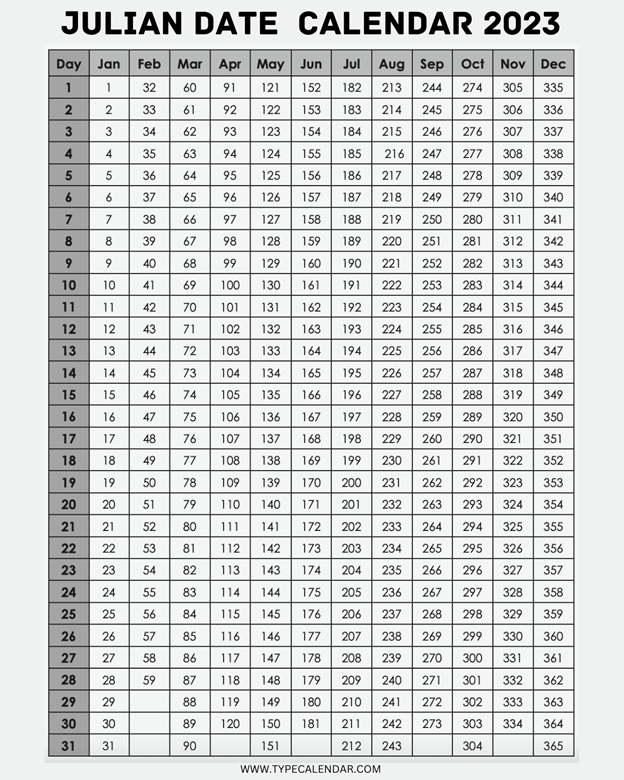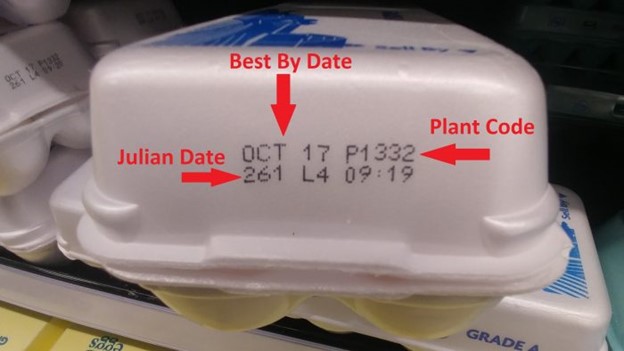As Expensive As Eggs Are, It’s Time to “Crack” Their Carton Code!
Have ever bothered to read an egg carton? If so, you may have noticed a few codes displayed. These codes are informative and it’s worth knowing how to “crack” them (pun intended).

When shopping for eggs, typically you first choose the type of eggs that you like, right? And then do you check the “sell by” date on the carton and compare it to others on the shelf ? I do too. And of course, we all do a quick visual inspection to make sure each shell is intact. They’re too expensive to be bringing home a broken egg.
Jillee, of www.onegoodthingbyjillee.com, says that used to be her process as well, until she learned about the surprisingly useful codes printed on each egg carton and how to decipher them. In one of her latest newsletters, she explains what these codes mean and how to interpret them. It’s a foolproof way to know how old the store’s eggs are.

First of all, the next time you check the carton’s expiration date, note the three-digit number next to it. That’s the date the eggs were packed according to the Julian calendar, which counts dates consecutively starting with January 1 written as 001, and ending with December 31 written as 365.
For example, if the number on your egg carton is 258, it signifies that the eggs were packed on the 258th day of the year. That would be September 15th. (In a Leap Year, it would be September 14th.) I’ve never heard of the Julian calendar, and I’m guessing I’m not the only one because Jillee provided a chart in her article that helps folks like me figure these numbers out. In case any of our readers need this help, too, here it is:

And here’s some good news: the USDA says eggs will stay fresh in the refrigerator for up to four to five weeks past their packing date. So once you figure out where the end of that approximate date range is, you can write it on your carton as a reminder to use up your eggs by then. The “exp” or egg “sell by” date is set at 30 days max after the pack date, so right around four weeks.
Not only does the carton code tell you when eggs were packed, it also tells you where they were packaged. This information is mandatory for all USDA-graded egg cartons.

The plant code usually starts with a P and is followed by a four-digit number. Jillee says if you’re curious about where your eggs come from, all you have to do is look up the plant code by going to https://data.ams.usda.gov/spotfire/wp/analysis?file=/AMS_Anonymous/PlantBook&waid=WGSY_ZmGLkKllfwBEkTc--141638c9e5lhom&wavid=0. But I’ll be honest, I can’t figure out how to do this. If you can make it work, please let me know and maybe you can walk me through it.
Knowing where eggs are packed is good information if you want to buy from a packer that’s closest to you. We’ve had eggs in our Utah stores that have come from as far away as Ohio. Now that I can “crack” the egg carton code, I can look for plants that are closer to home.

Finally, here’s a bottom line visual of what Jillee was talking about. Now, the next time you’re shopping for eggs, you’ll be able to pick the freshest!

When shopping for eggs, typically you first choose the type of eggs that you like, right? And then do you check the “sell by” date on the carton and compare it to others on the shelf ? I do too. And of course, we all do a quick visual inspection to make sure each shell is intact. They’re too expensive to be bringing home a broken egg.
Jillee, of www.onegoodthingbyjillee.com, says that used to be her process as well, until she learned about the surprisingly useful codes printed on each egg carton and how to decipher them. In one of her latest newsletters, she explains what these codes mean and how to interpret them. It’s a foolproof way to know how old the store’s eggs are.

First of all, the next time you check the carton’s expiration date, note the three-digit number next to it. That’s the date the eggs were packed according to the Julian calendar, which counts dates consecutively starting with January 1 written as 001, and ending with December 31 written as 365.
For example, if the number on your egg carton is 258, it signifies that the eggs were packed on the 258th day of the year. That would be September 15th. (In a Leap Year, it would be September 14th.) I’ve never heard of the Julian calendar, and I’m guessing I’m not the only one because Jillee provided a chart in her article that helps folks like me figure these numbers out. In case any of our readers need this help, too, here it is:

And here’s some good news: the USDA says eggs will stay fresh in the refrigerator for up to four to five weeks past their packing date. So once you figure out where the end of that approximate date range is, you can write it on your carton as a reminder to use up your eggs by then. The “exp” or egg “sell by” date is set at 30 days max after the pack date, so right around four weeks.
Not only does the carton code tell you when eggs were packed, it also tells you where they were packaged. This information is mandatory for all USDA-graded egg cartons.

The plant code usually starts with a P and is followed by a four-digit number. Jillee says if you’re curious about where your eggs come from, all you have to do is look up the plant code by going to https://data.ams.usda.gov/spotfire/wp/analysis?file=/AMS_Anonymous/PlantBook&waid=WGSY_ZmGLkKllfwBEkTc--141638c9e5lhom&wavid=0. But I’ll be honest, I can’t figure out how to do this. If you can make it work, please let me know and maybe you can walk me through it.
Knowing where eggs are packed is good information if you want to buy from a packer that’s closest to you. We’ve had eggs in our Utah stores that have come from as far away as Ohio. Now that I can “crack” the egg carton code, I can look for plants that are closer to home.

Finally, here’s a bottom line visual of what Jillee was talking about. Now, the next time you’re shopping for eggs, you’ll be able to pick the freshest!
 Alice Osborne
Alice Osborne
Weekly Newsletter Contributor since 2006
Email the author! alice@dvo.com
